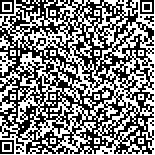Archive > Volume 42 Issue 2 > 2016,42(2):129-143. DOI:10.7519/j.issn.1000-0526.2016.02.001 Prev Next
Fuzzy Verification Test and Comparison of Three Types of Severe Convective Weather Nowcasting
- Article
- Figures
- Metrics
- Preview PDF
- Reference
- Related
- Cited by
- Materials
Abstract:
Severe convective weather is hard to forecast because of the character of small scale and rapid development. Fuzzy verification methods can get evaluation information at different spatial scales by using a spatial window or neighborhood surrounding the forecast and/or observed points, and are introduced into the verification of severe convective weather in this article. Focusing on the three types of severe convective weather, some operational nowcasting products like as onehour reflectivity extrapolation product of the Chinese Meteorological Administration (CMA) SWAN (Severe Weather Analysis and Nowcasting) system, are verified using the fuzzy method. Then, three ideal severe convective weather models are also built and verified to give a further study on the abovementioned methods. The results show that compared to traditional metrics with the stagey of “point to point”, fuzzy verification can glean additional information in different scales and evaluation strategies, evaluating forecasts more comprehensively and objectively. Based on different evaluation strategies, one forecast has different optimal scales and each fuzzy verification method has its own feature and application. When forecast has large bias, fuzzy verification methods can still give effective or “useful” scores while traditional metric can only give poor scores. For the severe convective events with characteristics of high thresholds and small scales, the fuzzy verification methods including minimum coverage with low fraction, fuzzy logic and multievent contingency table show more potential value than the traditional ones.
Keywords:
Project Supported:
Clc Number:


Mobile website









